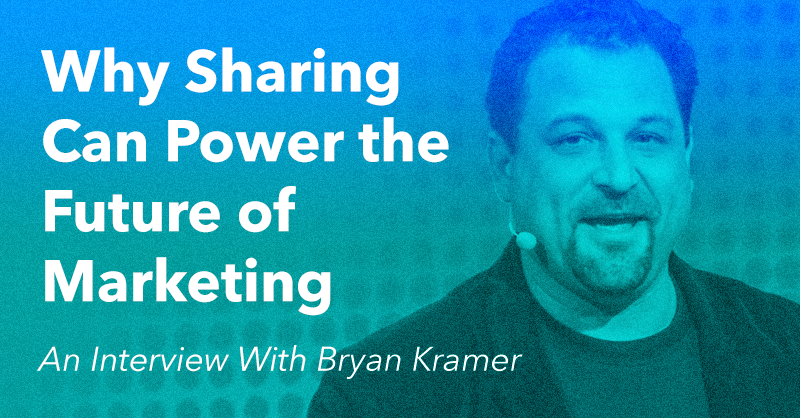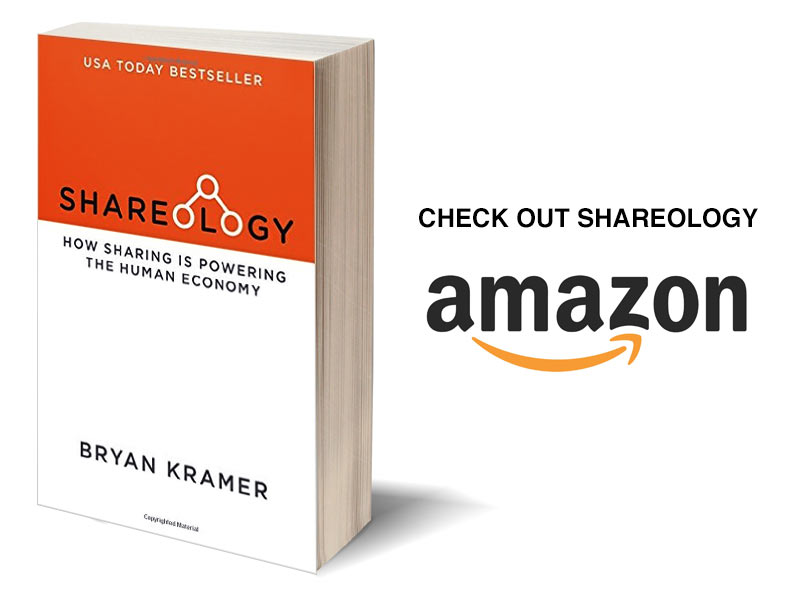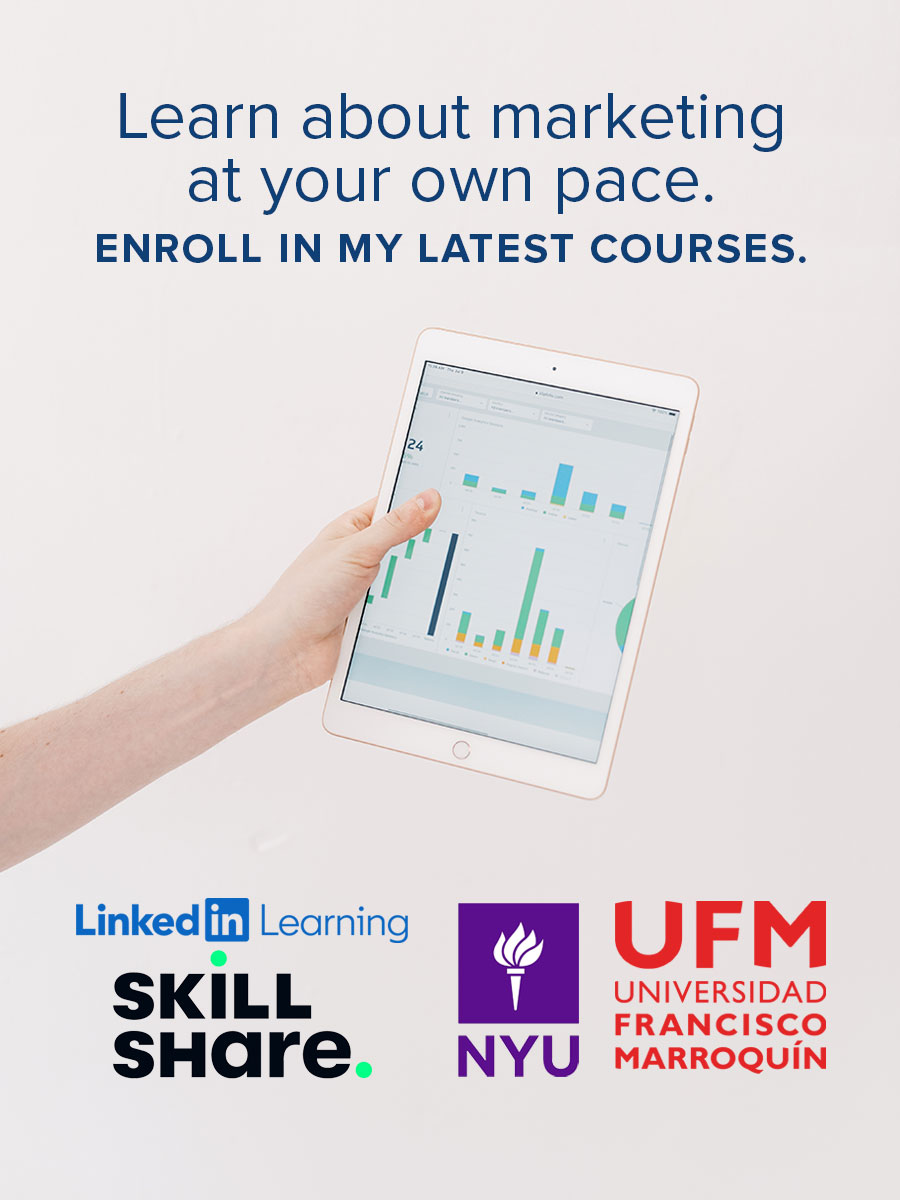
Marketing has always been about the sharing and spreading of ideas, and as the mediums we choose to communicate with have changed, so has the nature of sharing.
Bryan Kramer’s insightful and perceptive book, Shareology takes a broad forward-thinking look at the nature of sharing in the wake of current trends in communication, technology and human psychology and helps extrapolate the impact these changes will have on marketing.
He has already made a name for himself with his highly influential work in the digital marketing space and his founding of the #H2H business movement (inspired by his previous book There Is No B2B or B2C: It’s Human to Human #H2H).
Despite his busy schedule, Kramer was kind enough to answer a few questions regarding his book and provide even deeper insight regarding areas I thought our readers might be particularly interested in.
As sharing continues to play a bigger and bigger role in the way marketers interact with stakeholders across channels, understanding new ways to make your content and organization more human will become increasingly important. Kramer has succeeded in creating a book that is both easy to connect with and well worth sharing.
1. When you say “being human means being shareable,” how exactly do you think this new reality will influence marketing specifically?
Allowing employees to tell their own stories externally (not just re-tweeting or promoting company-sponsored content) can be powerful.
We know how shareable stories are, and allowing employees to share their own stories on their own channels about your brand, product, or culture is a powerful form of advocacy. It’s trusted content that you don’t have to create and it’s in your back pocket!
When it comes to employee advocacy, company leaders often ask the wrong question about word of mouth and social: “How do I get my employees to share my information?” The question they should be asking is, “How can I help them share their own information?”
Most people want to help but will only be inspired when they feel their company shares a vested interest in them. Your employees can be your best advocates; they care about your brand and want to share their experiences, but need guardrails to be sure they’re safe, so setting up sharing guidelines and making it easy for them to share safely is critical.
2. In the section titled “Being a Leader in the Human Economy,” you go through all of the qualities required, which of these do you find most crucial to establishing leadership in the new H2H economy?
Hands down, the most important quality is empathy.
Empathy: The ability to understand the emotional makeup of other people; skill in treating people according to their emotional reactions.
I predict that emotional intelligence will become increasingly valuable as our society progresses with robotic technology.
No matter how sophisticated technology gets, it will never be able to emulate the miracle of the human brain and its ability to demonstrate the traits listed above. More specifically, it will never be able to demonstrate human empathy for a contextual moment.
3. “The human economy’s growth will be stagnated by ‘business as usual’ until consumers (en masse) force brands to innovate outside their comfort zones.”
How do you see this panning out currently? What areas of marketing will be most drastically affected by these changes?
The Internet of Things is a technological shift that’s taking place right now where physical devices are being digitally connected to create more value. According to Gartner, there will be nearly 26 billion devices on the Internet of Things by 2020. Technology giants like IBM and Cisco have been working on this for several years.
In fact, Cisco even goes so far as to call this evolution the “Internet of Everything.” I spoke to Blair Christie, chief marketing officer of Cisco, about this in one of my company PureMatter’s Substance interviews. She talked about the concept, in the context of value, and how it changes the face of business and our lives as a whole:
The Internet of Everything is basically the next wave. It’s how people, process, data, and things are connecting in a way that hasn’t happened before. For instance, we think we’re connected today, but less than 1 percent of the world is actually connected to the Internet. Today that’s less than 2 billion people. By 2020 it will be close to 5 billion.
Right now 20 to 25 billion things are connected to the Internet— by 2020 close to 50 billion things will be connected. That’s remarkable!
We’re already having machine-to-machine or thing-to-thing doing a lot of interacting, but we will be seeing more people-to-machine, machine-to-people, and people-to-people connecting and providing more value in that connection than we’ve ever seen before.
4. Why do you think it is that brands have such a hard time being “human?” How might they best overcome these obstacles?
Consumers are confused. With a whopping 93% of communication based on nonverbal body language, that leaves just 7% left to explain verbally what we really mean.
So why can’t we make it simple for people to understand what we’re selling, so they can more easily share their experiences and the value they felt with others? More importantly, why is it that what we’re marketing most often does not align to actual consumer experiences?
I don’t care what language you speak, who your brand is or what message you’re trying to send, we all need to speak more human. Too often we complicate what we’re trying to say. Ironically, as our world becomes more customer-owned and socially enabled, we continue to see complicated, redundant, over-technical, and over-thought mass messages getting pushed out – and lost – in the ether.
Is it really getting harder to stand out, with so much data and information out there or is the answer just to clearly say what you mean, in understandable human words? The fact is that the lines are so far blurred now between the “B2C” (Business to Consumer) and “B2B” (Business to Business) marketing segments that it’s hard to differentiate.
I can’t tell you how many meetings I’ve been in where acronyms are used so often that my brain ends up spending so much time trying to decipher what they mean instead of focusing on the actual thoughts trying to be conveyed.
Acronyms have their place, but not when they replace communicating information to someone else who might not understand your world full of capital letters. We all need to think like the consumers we are, putting ourselves in the mindset of the buyer instead of trying to sell.
5. Throughout the book you talk about the need for brands to act more like regular people, but on page 147 you interestingly point out that people are also becoming more like brands:
“[The study] included something most of us don’t think about—that a person’s definition of self (their personal brand) has a large influence on what they share.”
Are these two factors distinct or do you think they are converging on some new point towards a middle ground?
Building a personal brand isn’t just important for celebrities and high-profile business owners. It’s important for businesses to recognize that power among their employees and to nurture it. For a brand to act more human means putting their people out front.
We can do so much more for our companies if we empower every individual within them to build a personal brand and share from it.
But we’re not quite there yet. It’s going to “take a village” to make the mindset shift necessary for businesses to embrace this concept. However, as new technologies continue to shape the way we connect and communicate, we’ll see this happen on a much larger scale.
6. Is there any room for traditional, top-down, broadcast media in this new democratic culture of sharing; or will new participatory and decentralized methods of communication edge out the old guard of marketing completely?
We live in an omni-channel world. Everything plays a role at every touch point. How we take in media will change, but the human senses will always need to be met in the same ways they always have (i.e. sound, sight, touch, smell).
Marketing will not change overnight, but eventually it will become more concierge-like where people will expect immediacy and can get personal recommendations faster from people they trust. Support will happen much more quickly en masse through Watson-like artificial intelligence.
But one thing will remain; the shareable contextual moments where we experience emotions (i.e. joy, laughter, sadness) will only be created by us humans. It’s these moments that make marketing important now and in the future.
To learn more about the new role of sharing in the human economy and to see in-depth profiles of how companies large and small have implemented these techniques, check out Bryan Kramer’s new book Shareology: How Sharing is Powering the Human Economy available now on Amazon.com.



